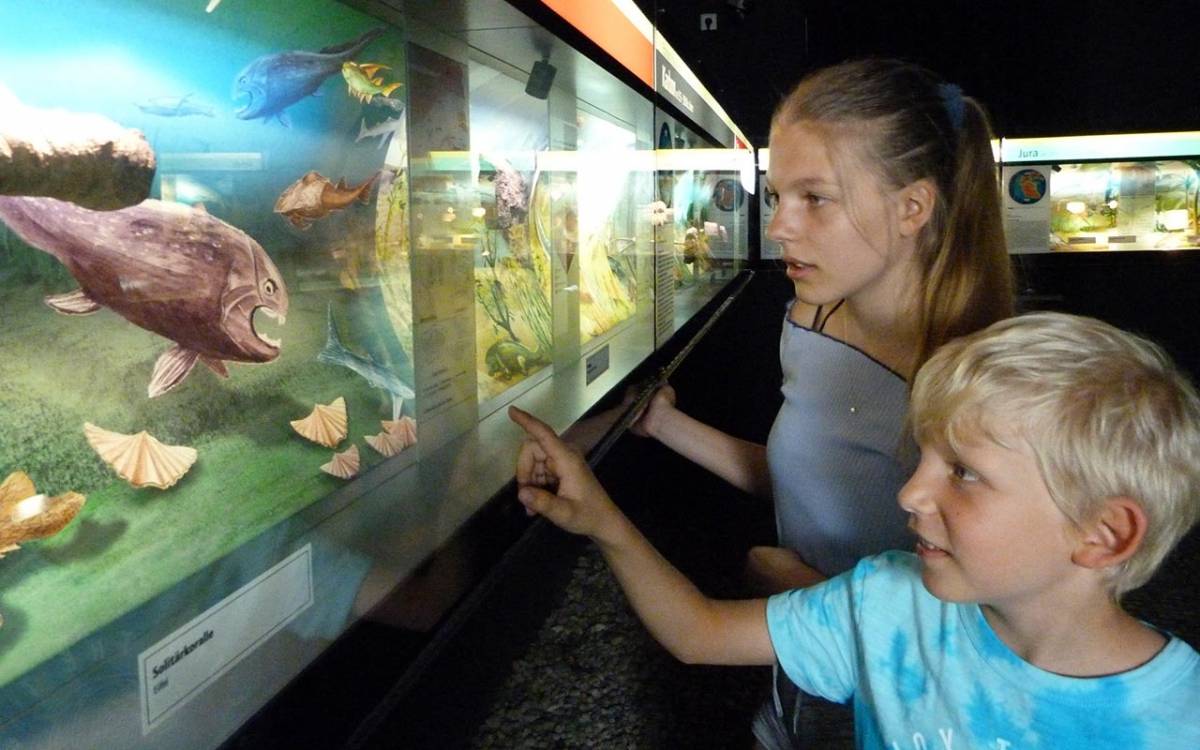The permanent collection in the Elementarium: Theme-based world of rocks
Volcanism, earthquakes, glaciation, deep seas and fragrant laurel forests - West Lusatia has experienced a great deal in the millions of years of its development. The rocks and fossils of West Lusatia provide us with a gateway enabling us to look into the distant past.

Even if the Earth's strata in West Lusatia do not harbour any dinosaurs, the inconspicuous greywacke stone native to the Lusatia region has yielded evidence of algae-like primordial organisms dating back to hundreds of millions of years before the giant reptiles roamed the planet. Each era leaves behind its own type of rocks, which reveals much to us, but also harbours many secrets. For instance, to this day, it has not been fully determined how granodiorite is formed. What is known, however, is that it infiltrated the already formed greywackes at some stage between 540 and 590 million years ago and it still remains on the Earth's surface as solid rock today.
When and how did greywacke and granodiorite form? Which creatures were in existence 700 million years ago? Were there volcanoes in West Lusatia? Younger types of basalt still permeate Lusatia’s primary rocks; black and mysterious, they hint at the forces that were at work when lava erupted from the ground in Lusatia.
The tertiary lignite and clay deposits found in Lusatia are among the biggest in Europe. However, they have been and still are not just an important factor for the local economy. Extracting these valuable raw materials has always been a focus of scientific investigation, especially since the Tertiary period left many traces behind in our region. The Wiesa clay pit on Hasenberg hill has kept researchers on tenterhooks for a hundred years. Leaves of the ginkgo tree, figs, laurel and myrica leaves do not just appear exotic. Today, they can still be found, among other places, in the subtropical forests of Southeast Asia and convey a vivid impression of what West Lusatia might have looked like 17 million years ago.
Not every rock lives up to its promise. The glacial stage of the Ice Age made profound and lasting changes to our landscape, leaving behind rocks that were originally formed in the far north. Each individual boulder provides us with information about its origin and frequently also about the time it was transported to West Lusatia by the huge masses of ice.







